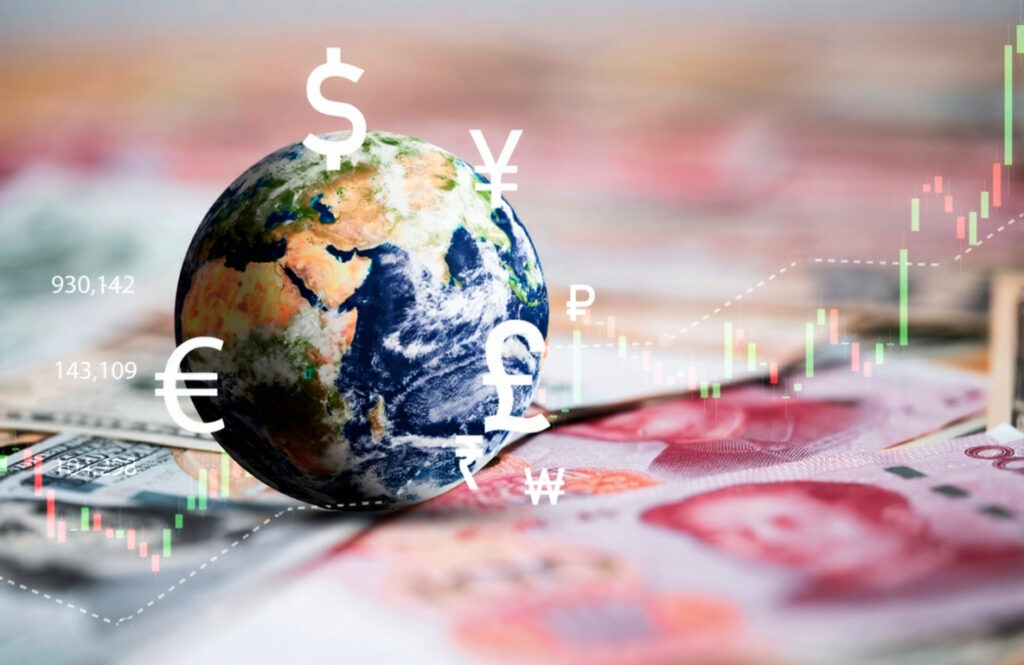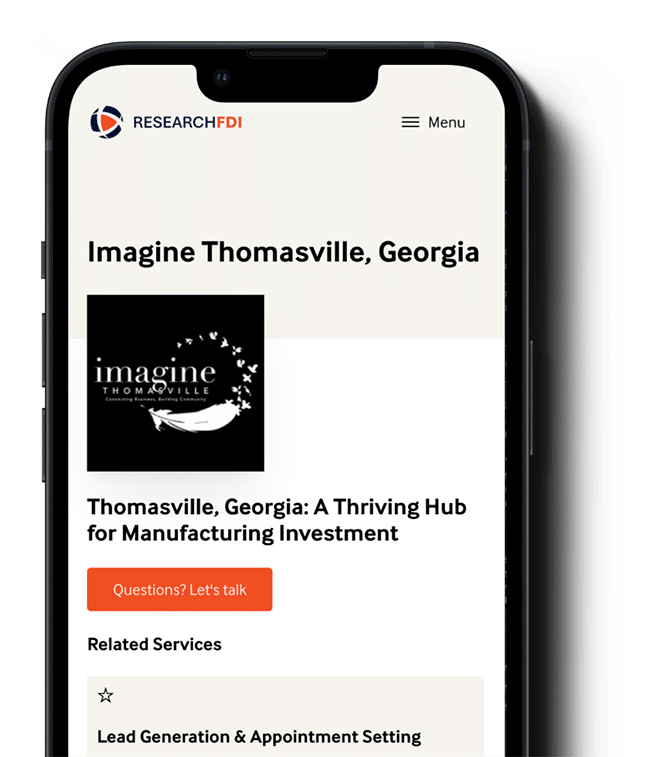Pick up almost any product in your home – a phone, a car part, a bottle of shampoo – and you’re holding the story of multiple economies working together.
A single smartphone might rely on lithium from Chile, semiconductors from Taiwan, and assembly lines in Vietnam. The efficiency of that chain doesn’t happen by chance. It’s built through vertical foreign direct investment: when companies expand across borders to control new stages of production.
Vertical FDI is what keeps global trade running smoothly, even as markets shift and supply risks rise. Instead of outsourcing critical stages, more companies are choosing to own them. Automakers are investing in battery mines. Food producers are opening packaging plants closer to farms. Tech giants are building data centers in every major region to keep services resilient.
This quiet trend is reshaping how economies connect. It’s also changing where investors are looking next. For economic developers, understanding vertical FDI isn’t just an academic exercise, it’s key to building supply chain-ready regions that attract long-term investment.
In today’s article, we’ll break down what vertical FDI means and how it differs from horizontal expansion, then offer a handful of global examples showing how companies use it to strengthen supply chains. We’ll also explore what it means for regional growth and how organizations can help communities turn these investment trends into strategy.
What Is Vertical FDI? (Defined in Layman’s Terms)
At its simplest, vertical FDI happens when a company invests in a business operation abroad that fills a hole in its supply chain. Instead of opening another branch to sell the same product (that’s horizontal FDI), a company going vertical invests in a partner, supplier, or distributor that helps them make or move their product more efficiently. Think of it as a way to “connect the dots” in global production.
Two Types of Vertical FDI
To understand how it works, it helps to separate vertical FDI into two main types:
- Backward Vertical FDI
A company invests upstream: closer to the source of raw materials or production inputs.
- Example: An electric vehicle manufacturer investing in a lithium mine to secure battery materials.
- The goal? Reduce supply risk and gain control over essential inputs.
- Forward Vertical FDI
A company invests downstream: closer to the customer or end market.
- Example: A food producer opening distribution centers in another country to handle packaging, logistics, and sales.
- The goal? Increase market reach and responsiveness.
Why Companies Go Vertical
Investing abroad and dealing with local regulations isn’t easy or cheap. So, why would a company go through the trouble of owning operations abroad instead of just outsourcing?
Because it gives them:
- Stability: Less exposure to supplier disruptions or trade bottlenecks.
- Cost control: Ownership can reduce middlemen and transportation costs.
- Speed: Shorter, more coordinated supply chains.
- Resilience: Better visibility into each link of production.
This approach is especially valuable in today’s unpredictable trade environment where tariffs, logistics challenges, and political shifts can affect how goods move globally.
In other words, vertical FDI is how companies take control of the uncertainty baked into global trade.
It’s what allows a car built in Germany to rely on batteries refined in Indonesia, or a tech firm in the U.S. to ship devices assembled in Vietnam without skipping a beat.
Vertical vs. Horizontal FDI: Understanding the Difference

To understand vertical FDI, it helps to see what it’s not.
When most people think of foreign investment, they imagine a company setting up a new branch overseas, like Starbucks opening cafés in France or Toyota building car plants in the U.S. That’s horizontal FDI: replicating the same business model in another market to reach more customers.
Vertical FDI, on the other hand, isn’t about selling the same product in a new place. It’s about controlling more of the process that makes that product possible.
A Simple Way to Tell Them Apart
| Factor | Horizontal FDI | Vertical FDI |
|---|---|---|
| Goal | Market access | Supply chain control |
| Activity | Duplicating production abroad | Expanding into supplier or distribution roles |
| Example | McDonald’s opens new restaurants in Asia | Tesla invests in lithium mines for EV batteries |
| Benefit | Revenue growth | Cost and risk reduction |
| Common Industries | Retail, consumer goods | Manufacturing, logistics, energy, tech |
Why the Distinction Matters
For economic developers, the difference isn’t academic, it shapes how you attract investment.
- Horizontal FDI looks for large consumer bases and strong domestic demand.
- Vertical FDI looks for efficient logistics, stable regulations, and sector clusters that support supply chains.
So while one city might market itself as “a great place to sell,” another succeeds by positioning itself as “a great place to make.”
Understanding which kind of investment your region can support (and what infrastructure it needs) is the foundation of a smart FDI strategy.
Vertical FDI Examples Around the World (3 Case Studies)
Case Study 1: Tesla, Inc. – Upstream Supply: Batteries & Gigafactories
Tesla’s strategy exemplifies backward vertical FDI, as the company invests abroad to control raw‐materials, battery production, and vehicle assembly. For example, Tesla’s Gigafactory in Nevada was designed to produce lithium‐ion batteries, with battery packs and drive components assembled under one roof.
By owning this upstream segment, Tesla reduces its reliance on external suppliers, mitigates supply-chain risk, and captures more margin. For regions, hosting such investment means high-skill manufacturing jobs, advanced robotics clusters, and supplier ecosystems.
Key takeaway for EDOs: Regions with strong mining inputs, energy supply, or battery-materials access can position themselves for backward vertical FDI in electrified and advanced manufacturing supply chains.
Case Study 2: Unilever – Downstream Control: Distribution Hubs & Logistics
Unilever’s evolution into supply-chain leadership highlights forward vertical FDI, investments into distribution, packaging, and logistics in markets abroad. As their supply-chain report describes, Unilever has shifted its asset base to deliver products faster and nearer to customers across Asia and Europe.
By developing fewer, larger strategic hubs, rather than many small scattered nodes, Unilever increases speed, lowers cost, and improves leverage over its global retail footprint.
Key takeaway for EDOs: Regions that provide strong logistics infrastructure (ports, rail, highways), large warehousing space, and access to consumer growth zones should pitch themselves for forward vertical FDI opportunities.
Case Study 3: Toyota Motor Corporation – Global Auto Production and Component Ecosystems
Toyota’s investment in Southeast Asia illustrates vertical FDI through the creation of automotive supply-chain clusters. It underpins not just car assembly but locally-integrated parts, logistics, R&D, and distribution networks. These investments turn a regional assembly hub into a manufacturing ecosystem, not just a production line.
Key takeaway for EDOs: Regions that align with major global brands by offering skilled labour, robust infrastructure, and proximity to markets can become nodes in vertical supply chains rather than simple assembly plants.
Case Study Insights
These case studies show that vertical FDI is not a niche strategy; it’s front and centre in global investment flows. Whether it’s in the form of battery manufacturing, consumer goods logistics, advanced manufacturing, energy production or automotive clusters, companies are increasingly investing across stages of the supply chain, not just replicating operations abroad.
For economic developers, the implication is clear: your region’s value lies in being not just a market, but part of a global supply-chain network. By understanding how leading companies use vertical FDI, you can craft a competitive proposition that aligns with their strategic priorities.
Advantages: Why Companies (and Economies) Go Vertical

1. Greater Supply-Chain Control
Vertical FDI gives companies ownership of critical inputs, suppliers, or distribution channels, reducing exposure to supply shocks or trade disruptions. Tesla’s investments in global battery material mines, for instance, ensure stable production while locking in long-term pricing power. For host regions, those investments mean durable, high-value jobs and infrastructure that stays put.
2. Cost and Efficiency Gains
Owning more of the production process helps firms cut costs, streamline coordination, and reduce lead times. The OECD estimates that integrated supply chains can boost manufacturing productivity by 10–15%. For local economies, this often leads to investment in transport, energy, and logistics infrastructure, creating spillover benefits far beyond a single project.
3. Innovation and Knowledge Transfer
Vertical FDI rarely arrives empty-handed. It brings new processes, technologies, and management practices that strengthen local capabilities. Partnering with global firms helps regions upskill their workforce and move up the value chain.
4. Long-Term Stability
Because vertically integrated projects are capital-intensive and strategic, companies are less likely to relocate them quickly. This gives host countries a more stable employment base and predictable economic returns.
Disadvantages: The Hidden Complexities
1. High Entry Barriers
Vertical FDI demands major upfront investment in land, logistics, and technology, often limiting participation to the largest multinationals. Smaller regions may struggle to attract these projects without strong infrastructure or financing incentives.
2. Regulatory and Political Risk
From environmental permits to trade policy, vertically integrated operations span multiple jurisdictions and industries. Even one regulatory misstep can disrupt an entire supply chain. Regions with transparent, consistent approval systems have a clear edge here.
3. Market Concentration Risks
When one firm controls multiple production stages, it can squeeze local suppliers or stifle competition. Without balanced policies, host markets risk dependency on a single large investor.
4. Cultural and Operational Friction
Integrating production across borders means blending different business cultures, management systems, and labour expectations. Poor alignment can cause inefficiency or reputational damage, especially when communication breaks down between local and corporate teams.
Why Vertical FDI Matters for Economic Developers
Vertical FDI isn’t just a corporate tactic, it’s a blueprint for regional competitiveness.
Here’s what it means for economic developers:
Positioning
Go beyond marketing your region as a market. Vertical investors want integration, so show how your assets connect to their supply chains.
Infrastructure Alignment
Efficient ports, rail, industrial parks, and energy grids are non-negotiable. The smoother your logistics, the stronger your investment case.
Workforce Depth
Highlight technical and operational talent, not just headcount. Supply-chain investors prioritise skill density and sector-specific expertise.
Policy Predictability
Stable permitting, consistent taxation, and transparent customs processes are critical. Regulatory clarity reduces friction and builds investor confidence.
Cluster Storytelling
Frame your economy as an ecosystem, with logistics supporting manufacturing, manufacturing powered by energy, and energy connected to innovation.
Long-Term Retention
Vertical investors stay for the long haul. Invest in aftercare, reinvestment programs, and supplier-link initiatives to keep growth compounding locally.
How Economic Developers Can Attract Vertical FDI
Winning vertical FDI is about clarity and coordination, showing investors that your region isn’t just open for business, but ready to fit seamlessly into their global supply chain.
1. Map Your Supply Chain Strengths
Identify where your region adds value: upstream in resources or manufacturing, downstream in logistics or distribution. Investors want to see how their operations plug directly into your ecosystem.
2. Target Strategic Sectors
Focus on sectors where vertical integration already thrives, like advanced manufacturing, energy, food processing, clean tech, and logistics. Tailor outreach and incentives to those specific industries.
3. Develop Infrastructure-ready Sites
Pre-zoned, utility-serviced industrial land is a competitive advantage. Investors move faster when site-readiness eliminates risk and uncertainty.
4. Build Industry Partnerships
Work with local universities, suppliers, and business councils to strengthen your region’s cluster credibility. Collaboration signals capability, and reduces investor onboarding friction.
5. Communicate Predictability
Clear permitting processes and transparent regulations matter more than flashy incentives. Global firms want stability they can plan around, so show them how your region can provide it.
6. Market With Data
Use data-driven storytelling about logistics access, cost savings, and workforce composition to demonstrate concrete ROI. Investors don’t buy slogans; they buy outcomes.
The Future of Vertical FDI: Resilience, Regionalization, and Opportunity

The global economy is shifting from just-in-time to just-in-case.
Companies aren’t chasing the cheapest option anymore, they’re chasing the most reliable one. That’s why vertical FDI is accelerating: it gives firms the ability to control their supply chains, diversify risk, and stay agile in a world defined by disruption.
Resilience is the new currency.
From semiconductors to clean energy, businesses are redesigning their production networks to be closer to consumers, politically stable, and ESG-aligned. The regions that prepare for this shift by developing advanced infrastructure, green energy, and skilled labour, will define the next generation of investment hotspots.
Regionalization is replacing globalization.
Expect to see more friend-shoring and near-shoring: vertical investments that stay within trusted trade blocs. That means huge opportunities for North America, Western Europe, and emerging manufacturing hubs that can offer reliability over cost.
For Economic Developers:
Now is the time to map your role in the global supply chain. The goal isn’t to attract every investor, it’s to anchor the right ones that make your region indispensable.
| Partner with ResearchFDI |
|---|
| At ResearchFDI, we help communities turn global investment trends into actionable strategies. Our team works with economic developers to identify sector strengths, build investor pipelines, and position regions for the next wave of FDI—vertical, sustainable, and future-ready. If your region is ready to strengthen its place in the global supply chain, connect with our team today and start building the foundation for long-term growth. |



